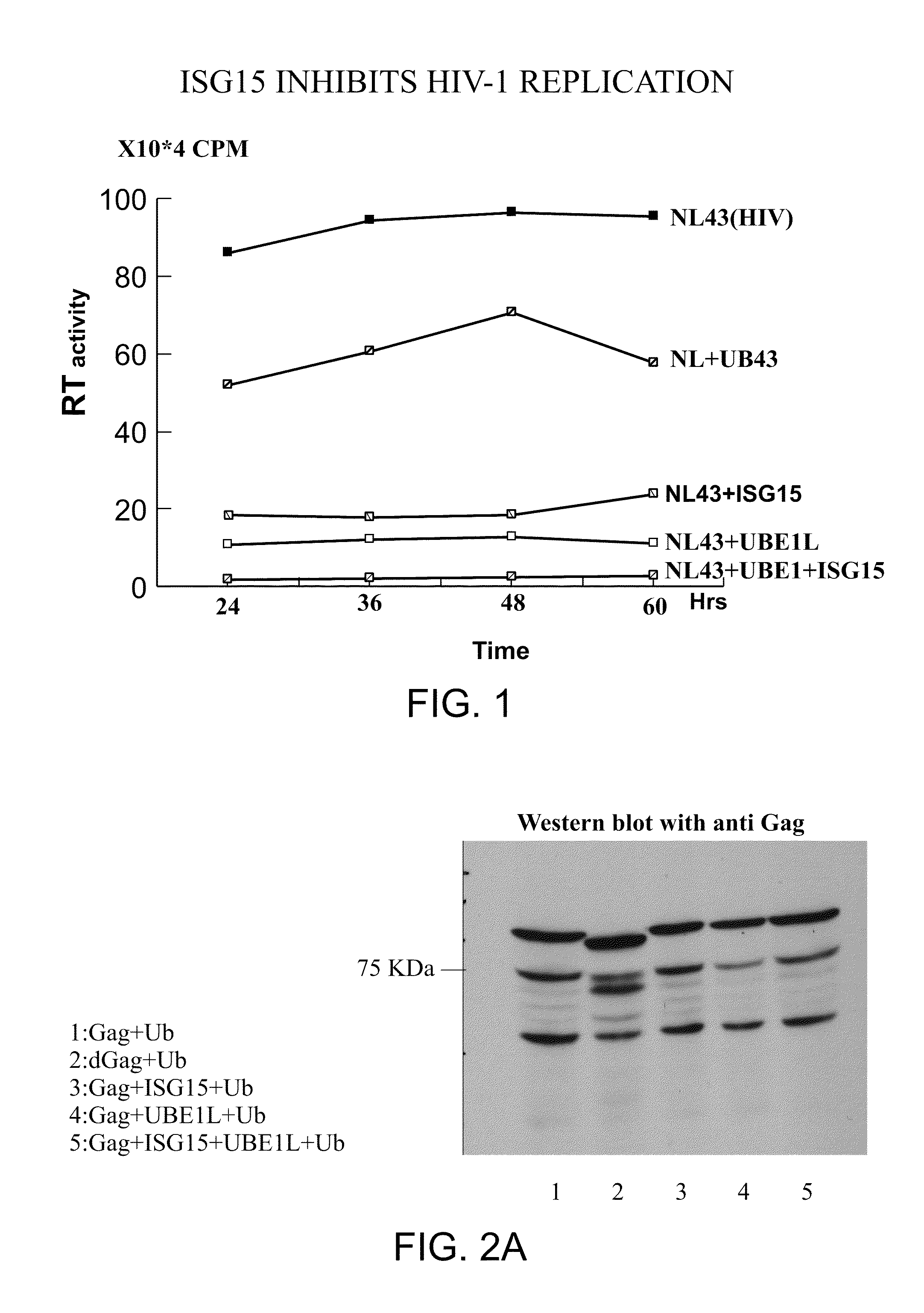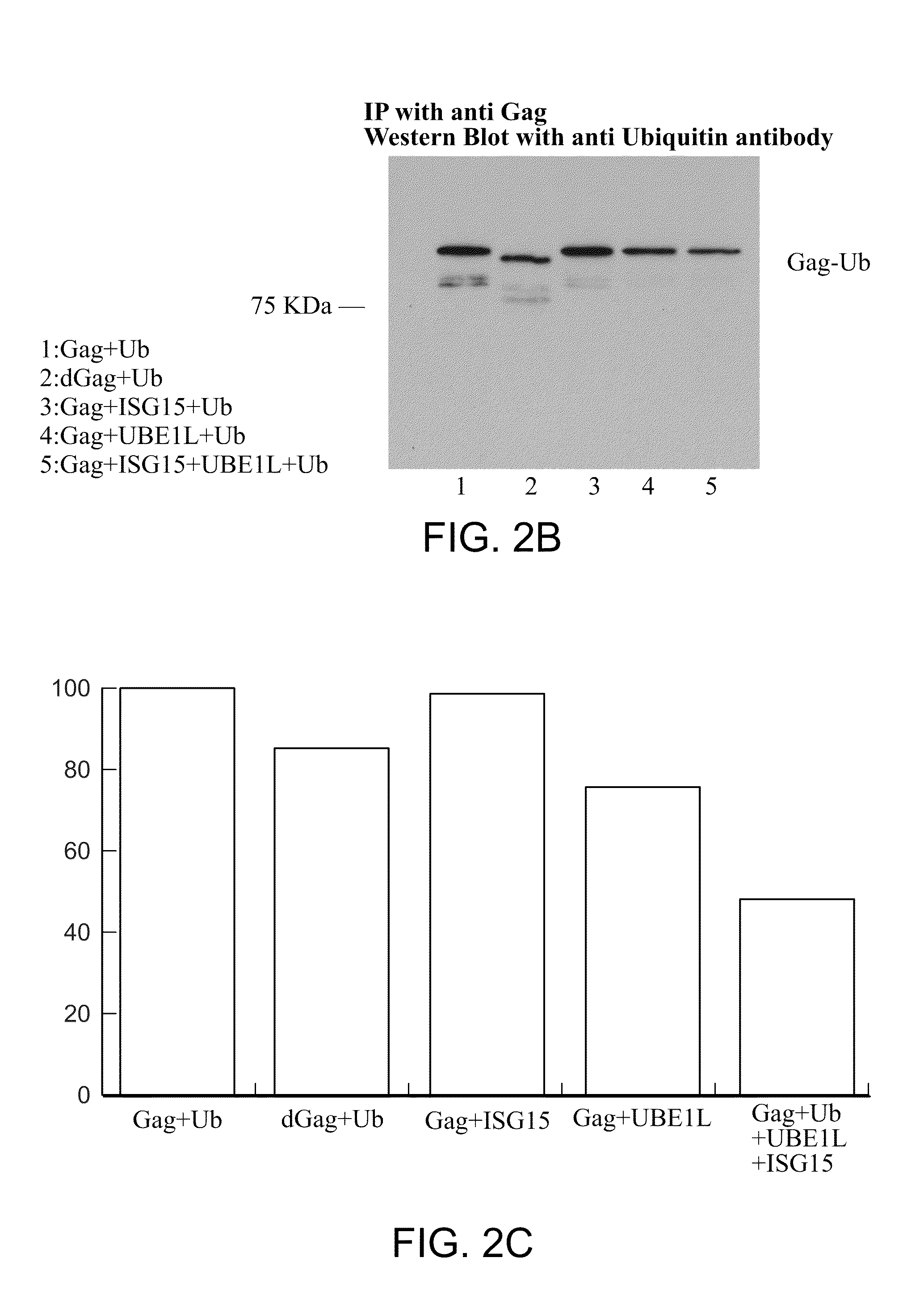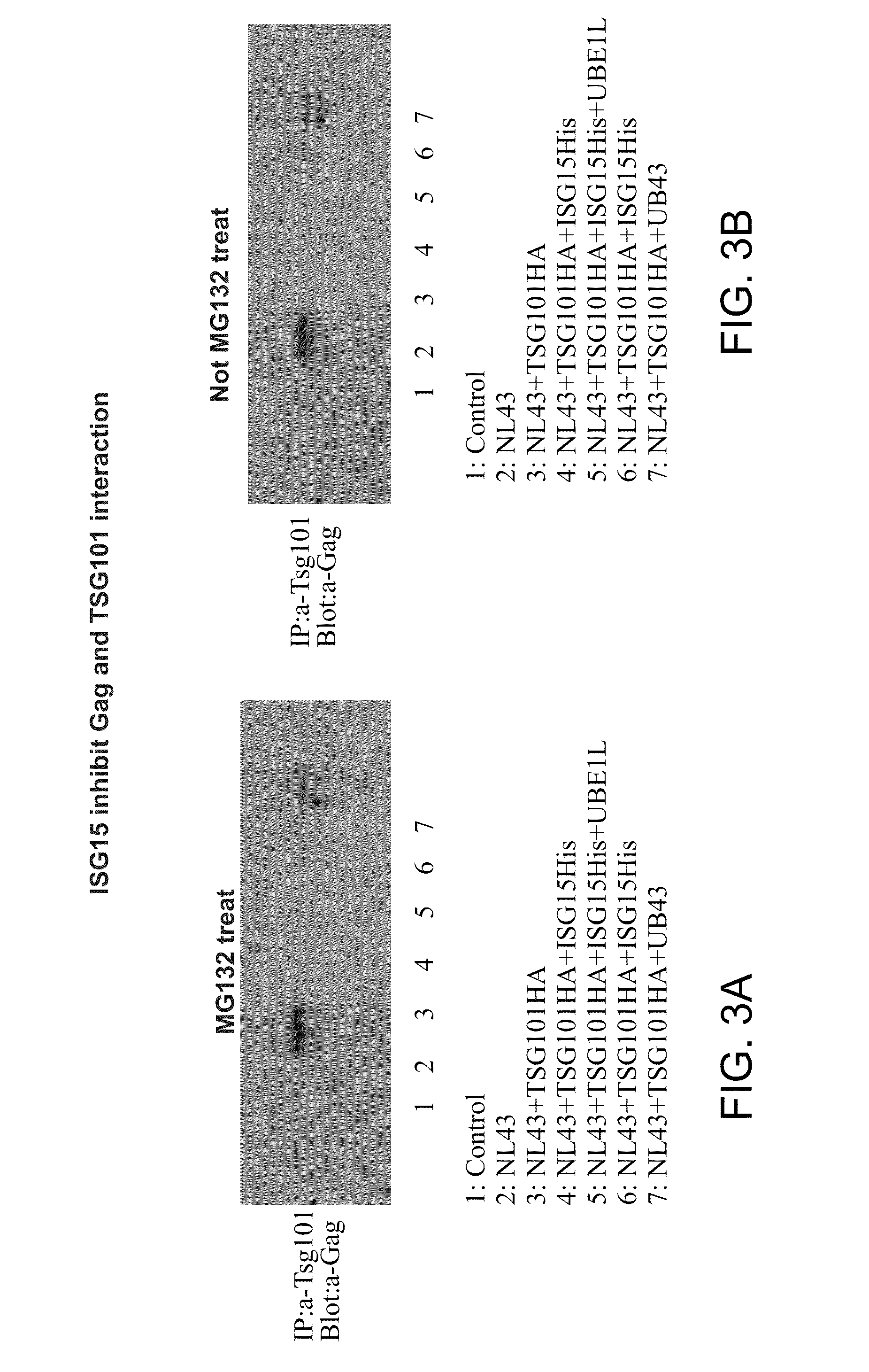Methods of inhibiting viral replication
a viral replication and inhibition technology, applied in the field of methods of inhibiting viral replication, can solve the problems of neoplastic growth and eventually death, opportunistic infections, neurological diseases, etc., and the mechanism of isg15-mediated antiviral action has not been elucidated., and achieves the effect of increasing the expression or activity of ubel-1
- Summary
- Abstract
- Description
- Claims
- Application Information
AI Technical Summary
Benefits of technology
Problems solved by technology
Method used
Image
Examples
example 1
ISG15 inhibits HIV-1 Replication
[0121]It has previously been observed that IFNα mediated inhibition of HIV-1 replication correlates with the induction of ISG15 and that the inhibition occurs at the level of virus assembly and budding. Addressing the molecular mechanism of this inhibition, it has been determined that over-expression of ISG15 inhibits the HIV-1 replication, and further inhibition was observed in cells over expressing the ISG15 activating ligase UBEL-1 (see FIG. 1). The ISG15 deconjugating enzyme UBP43 releases ISG15 mediated inhibition. Overexpression of ISG15 inhibited ubiquitination of cellular proteins as well as ubiquitinated proteins present in HIV-1 virons.
example 2
ISG15 Inhibits Ubiquitination of Gag
[0122]Since monoubiquination of Gag was shown to be important for the HIV-1 budding process, it was next examined as to whether ISG 15 can inhibit mono-ubiquination of the Gag protein. Overexpression of ubiquitin, ISG15, or UBEL-1 did not affect relative levels of ectopic Gag protein in transfected cells, indicating that neither ubiquitin nor ISG15 induced Gag degradation. However, ubiquitination of Gag polypeptides was inhibited in cells that express UBEL-1 and ectopic ISG15. Cells were co-transfected with plasmids expressing HIV-1 gag alone or in the presence of UBEL-1 and ISG15. Cell lysates were analyzed 24 hrs post tranfection for the presence of Gag and ubiquitinated gag. dGag represents mutant of Gag with deleted p6 region. The results show modest inhibition of Gag ubiqutination by ISG15 (see FIG. 2).
example 3
ISG15 Inhibits Interaction between Gag and Tsg101
[0123]Cells were co-transfected with Gag and Tsg101 expressing plasmid alone or in the presence of ISG15 or ISG15 and UBEL-1. 24 hr post transfection cell lysates were immune precipitated with HA antibodies (detecting Tsg101) and precipitates immune blotted with Gag antibodies (see FIG. 3). The relative levels of Tsg101 in the precipitates was estimated by immune blotting with HA antibodies. The experiments were done in the presence and absence of MG132 that inhibits proteosome degradation. The results indicate binding of Tsg101 with Gag (lane 3) that is inhibited in the presence of ISG15 (lanes 4, 5, 6).
PUM
| Property | Measurement | Unit |
|---|---|---|
| of time | aaaaa | aaaaa |
| length | aaaaa | aaaaa |
| nucleic acid sequence | aaaaa | aaaaa |
Abstract
Description
Claims
Application Information
 Login to View More
Login to View More - R&D
- Intellectual Property
- Life Sciences
- Materials
- Tech Scout
- Unparalleled Data Quality
- Higher Quality Content
- 60% Fewer Hallucinations
Browse by: Latest US Patents, China's latest patents, Technical Efficacy Thesaurus, Application Domain, Technology Topic, Popular Technical Reports.
© 2025 PatSnap. All rights reserved.Legal|Privacy policy|Modern Slavery Act Transparency Statement|Sitemap|About US| Contact US: help@patsnap.com



